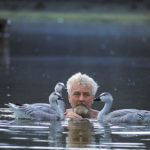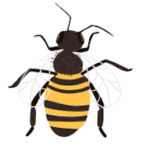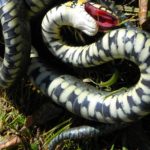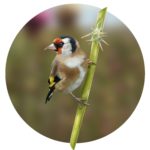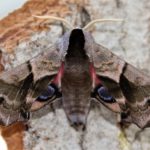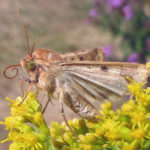Del comportamiento de los animales y del comportamiento de los humanos
- FABBRO, F.; AGLIOTI, S.M.; BERGAMASCO, M.; CLARICI, A.; PANKSEPP, J. (2015) Evolutionary aspects of self- and world consciousness in vertebrates. Frontiers in Human Neurocience. [en línea] | https://doi.org/10.3389/fnhum.2015.00157
- GAVIRIA STEWART, E.; CUADRADO GUIRADO, I.; LÓPEZ SÁEZ, M. (2019) Introducción a la psicología social. Sanz y Torres. ISBN: 978-84-17765-02-6
- VV.AA. (2016) Fundamentos de Psicobiología. Sanz y Torres. ISBN: 978-84-16466-26-9
- DAILY MAIL. (2011) China: Tortured mother bear kills her cub and then herself | Daily Mail Online. Consultado por última vez 08/12/2020
Konrad Lorenz: Padre de la etología
- Nisbett, Alec (1994) Lorenz. Salvat. ISBN 84-345-8905-2
- Darwin, Charles, & Prodger, Phillip. The expression of the emotions in man and animals. Oxford University Press, USA, 1998.
- Lorenz, Konrad Z. (1935). El compañero en el ambiente de las aves. en: J. für Ornithologie 83 (2-3), p. 137 – 215 y p. 289 – 413 (reimpresión de 1965, en: “El comportamiento humano y animal” Vol. 1).
- Lorenz, Konrad Z. (1949). Hablaba con las bestias, los peces y los pájaros, conocido también como: El anillo del rey Salomón.
- Lorenz, Konrad Z. (1950). Cuando el hombre encontró al perro.
- Lorenz, Konrad Z. (1966). Sobre la agresión.
- Lorenz, Konrad Z. (1973). La otra cara del espejo.
- Lorenz, Konrad Z. (1973). Los ocho pecados mortales de la humanidad civilizada.
- Lorenz, Konrad Z. (1973) Biographical, The Nobel Prize in Physiology or Medicine 1973». Nobel prize The Official Web Site of The Nobel Prize. Consultado el 7 de noviembre de 2013.
- Lorenz, Konrad Z. (1982). Fundamentos de la etología.
- Lorenz, Konrad Z. (1983). La decadencia del hombre.
- Lorenz, Konrad Z. (1988). Estoy aquí, ¿dónde estás tú?. Etología del ganso gris silvestre.
- Lorenz, Konrad Z. (1992). La ciencia del hombre. El manuscrito ruso.
- Podos, Jeffrey (1994). “Early perspectives on the evolution of behavior: Charles Otis Whitman and Oskar Heinroth”. Ethology Ecology & Evolution. 6 (4): 467. doi:10.1080/08927014.1994.9522972.
- Schulze-Hagen, Karl & Birkhead, Timothy R (2014). “The ethology and life history of birds: The forgotten contributions of Oskar, Magdalena and Katharina Heinroth”. Journal of Ornithology. 156: 9. doi:10.1007/s10336-014-1091-3.
PreguntasHN: La “tanatosis” o habilidad de los animales de hacerse los muertos
- Alloa, E. (2018). Phasmid Thinking. Angelaki, 23(4), 103-112.
- Bilde, T., Tuni, C., Elsayed, R., Pekar, S., Toft S. (2007). Nuptial gifts of male spiders: sensory exploitation of the female’s maternal care instinct or foraging motivation?, Anim Behav, 73, 267-273.
- Fernández-Guiberteau, D., Carrero-Casado F. (2016). Tanatosis en lagartija roquera (Podarcis muralis), lagartija occidental ibérica (Psammodromus occidentalis) y culebra viperina (Natrix maura). Butll Soc Catalana Herpetología, 23, 93-96.
- Humphreys, R.K., Ruxton, G.D. (2018). A review of thanatosis (death feigning) as an anti-predator behaviour. Ecol. Sociobiol, 72(22).
- Sanchéz Paniagua, K., Abarca, J.G. (2016) Thanatosis in four poorly known toads of the genus Incilius (Amphibia: Anura) from the highlands of Costa Rica. Mesoamerican Herpetol, 3, 135–140.
- Rogers SM, Simpson SJ (2014) Thanatosis. Current Biology, 24(21), R1031–R1033.
Darwin, el etólogo
- Bateson, P. (2004). The active role of Behaviour in Evolution. Biology and Philosophy 19: 283-298.
- Bowler, P. J. (1996). Charles Darwin: El hombre y su influencia. Alianza Editorial. 272 pp.
- Calvin, W. H. & Bickerton, D. (2001). Lingua ex machina: La conciliación de las teorías de Darwin y Chomsky sobre el cerebro humano. Gedisa. 368 pp.
- Darwin, C. (2008). La variación de los animales y plantas bajo domesticación. Catarata. CSIC. 944 pp.
- Darwin, C. (2012). El origen del hombre. Planeta. 896 pp.
- Darwin, C. (1998). La expresión de las emociones en los animales y en el hombre. Alianza Editorial. 392 pp.
- Ruse, M. (2008). Charles Darwin. Katz Editores. 366 pp.
Coloración basada en carotenoides en aves y su ligación a la selección sexual
- Aguilera, E., and Amat, J.A. (2007). Carotenoids, immune response and the expression of sexual ornaments in male greenfinches (Carduelis chloris). Naturwissenschaften 94: 895–902. https://doi.org/10.1007/s00114-007-0268-5
- Caro, T. (2017) Wallace on Coloration: Contemporary Perspective and Unresolved Insights. Trends Ecol Evol 32:23–30. doi.org/https://doi.org/10.1016/j.tree.2016.10.003
- Gazda, M.A., Araújo, P.M., Lopes, R.J., et al. (2020). A genetic mechanism for sexual dichromatism in birds. Science 368: 1270-1274. doi.org/10.1126/science.aba0803
- Lopez, G., Figuerola, J., and Soriguer, R. (2008). Carotenoid‐based masks in the European Goldfinch Carduelis carduelis reflect different information in males and females. Ardea 96: 233– 242.
- MacDougall, A.K., and Montgomerie, R. (2003). Assortative mating by carotenoid-based plumage colour: a quality indicator in American goldfinches, Carduelis tristis. Naturwissenschaften 90(10): 464-7. doi: 10.1007/s00114-003-0459-7
- Martínez-Espinosa, R. (2006). El cardo mariano en la alimentación de jilgueros. Rev Ornitol práctica 20:38.
- Murphy, T.G., Rosenthal, M.F., Montgomerie, R., and Tarvin, K.A. (2009). Female American goldfinches use carotenoid-based bill coloration to signal status, Behavioral Ecology 20(6): 1348–1355. https://doi.org/10.1093/beheco/arp140
- Murphy, T.G., Tarvin, K.A., and Burness G. (2012). Carotenoid-based ornaments of female and male American goldfinches (Spinus tristis) show sex-specific correlations with immune function and metabolic rate. Physiological and Biochemical Zoology 85(4: 348-363. doi:10.1086/666059
Comportamiento deimático
- Stevens, M. & Merilaita, S. (2009). Animal camouflage: current issues and new perspectives. Philosophical Transactions of the Royal Society B, 364, 423-427.
- Stevens, M. (2007). Predator perception and the interrelation between different forms of protective coloration. Proceedings of the Royal Society B, 274, 1457-1464.
- Edmunds, M. 1981. Defensive behavior. In D. McFarland (ed.), The Oxford Univ. Press, Oxford.
- Vidal-García M, O’Hanlon JC, Stevenson GJ, Umbers KLD. (2020). The evolution of startle display: a case study in prying mantises. Proceedings of the Royal Society, B 287
- David McFarland A dictionary of Animal Behaviour
- Coppens, B. (2019). https://breedingbutterflies.com/smerinthus-ocellata-eyed-hawkmoth/ (Consultado el 16 de octubre de 2020)
- McFarland D. A dictionary of Animal Behaviour
- García-Bull & Ñúnez de Murga Javier. 1991. Hablando de agresión. Universitat de Valencia. Servei de Publicacions
- Langridge KV, Broom M, Osorio D (2007). Selective signalling by cuttlefish to predators. Current Biology 17: 1044–1045.
- Toledo L.F., Sazima I. & Haddad C.F.B. (2011). Behavioural defences of anurans: an overview. Ethology Ecology & Evolution 23: 1-25.
- Langridge K., Broom M. & Osorio D. (2008). Selective signalling by cuttlefish to predators. Current biology 17: 1044-1045.
Investigación en cognición canina
- Engle R.W., Zentall T.R., (eds). Special Issue on Cognition in Dogs. Current Directions in Psychological Science, Vol 25, Issue 5, 2016
- Katz J.S., Huber, L., (eds). Special Issue: Canine Cognition. Learning and Behavior, Vol 46, issue 4, 2018.
- Miklosi, A. Dog behaviour, evolution and cognition. 2ª Edición. Oxford University Press, 2015.
- Wynne, C., Udell, M. Animal Cognition. 2ª Edición. Palgrave Macmillan, 2013.
El reclamo químico: El mundo de los compuestos volátiles
- Clavijo McCormick, A., Unsicker, S. B., & Gershenzon, J. (2012). The specificity of herbivore-induced plant volatiles in attracting herbivore enemies. Trends in Plant Science, 17(5), 303–310.
- Paré, P. W., & Tumlinson, J. H. (1999). Plant volatiles as a defense against insect herbivores. Plant Physiology, 121, 325–331.
- Rodriguez-Saona, C., Blaauw, B. R., & Isaacs, R. (2012). Manipulation of natural enemies in agroecosystems: habitat and semiochemicals for sustainable insect pest control. In M. L. Larramendy & S. Soloneski (Eds.), Integrated Pest Management and Pest Control – Current and Future Tactics (pp. 89–125). InTech.
- Turlings, T. C. J., & Erb, M. (2018). Tritrophic interactions mediated by herbivore-induced plant volatiles: mechanisms, ecological relevance, and application potential. Annual Review of Entomology, 63, 433–452.
En una carrera por sobrevivir
- Erin H. Gillam , John K. Westbrook , Paul G. Schleider , y Gary F. McCracken “Palos virtuales y reales Insectos: Efectos de la ecolocalización en feromonas seguimiento del comportamiento del macho maíz Earworm polillas, Helicoverpa zea ,” The Southwestern Naturalist 56 ( 1). 2011, pg. 103-107. (Consultada el 7 de octubre de 2020).
- Martha Pérez Álvarez y Alejandro Barro Cañamero. “Funcionalidad del órgano timpánico de Urania boisduvalii (Lepidoptera: Geometroidea: Uraniidae) y su posible importancia conductual.” Revista Cubana de Ciencias Biológicas. 2014, vol. 3 Edición 1, pg. 81-94. 14p. (Consultada el 7 de octubre de 2020).
- Kenneth D. Roeder. “Tendencia de giro de las polillas expuestas a ultrasonido mientras están en vuelo estacionario”. Revista de fisiología de insectos. Volumen 13, Número 6 , junio de 1967, páginas 873-880. (Consultada el 9 de octubre de 2020)
- Kenneth D. Roeder y Asher E. Treat. “Un sentido acústico en algunas polillas (Choerocampinae)”. Revista de fisiología de insectos (1970) 16 (6). Pg. 1069-1086. (Consultada el 10 de octubre de 2020).
- Drickamer, L.C., Vessey, S.H. y Jacob, E.N. (2002) “Animal behavior: Mechanisms, Ecology, Evolution”. Ed. McGraw-Hill. (Consultada el 12 de octubre).

